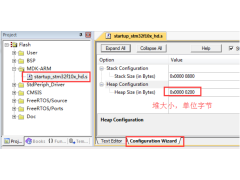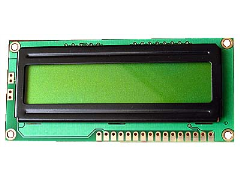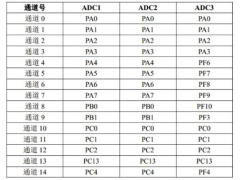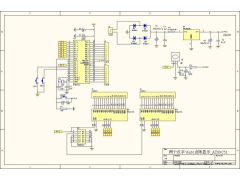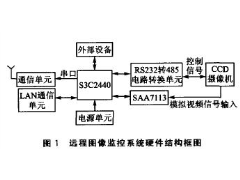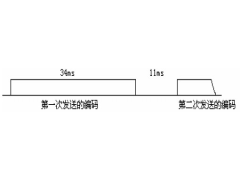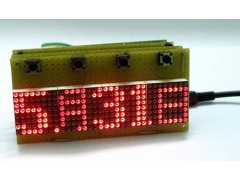昨天在论坛上看到有人帖出了他写的并串转换VHDL代码,但是他自己说有问题,但是不知道怎么改。我大概看了一下,发现思路还是比较乱的。于是就写下了我自己的并串转换代码。这个并串转换代码是依靠同步状态机来实现其控制的。其实并串转换在实际的电路中使用还是比较多的,尤其在通信线路方面的复用和分解方面,原理上就是一个串并转换和并串转换的过程。举个简单的例子,计算机串口发送数据的过程,如果满足发送条件了,其实就是一个并串转换的过程了。好了,废话不说,看代码就是。
--------------------------------------------------------------------------------
-- Engineer: skycanny
-- Module Name: p2s - Behavioral
-- Tool versions: ISE7.1
-- Description: This module is designed to implement parallel to serial conversion
--------------------------------------------------------------------------------
library IEEE;
use IEEE.STD_LOGIC_1164.ALL;
use IEEE.STD_LOGIC_ARITH.ALL;
use IEEE.STD_LOGIC_UNSIGNED.ALL;
entity p2s is
port(
reset : in std_logic;
clk : in std_logic;
start : in std_logic; --low active,data_in valid
data_in : in std_logic_vector(7 downto 0);
data_valid : out std_logic; --high active,output data valid
ready : out std_logic; --low active,ready to recieve data
q : out std_logic
);
end p2s;
architecture Behavioral of p2s is
signal reg : std_logic_vector(7 downto 0);
signal cnt : std_logic_vector(3 downto 0);
signal reg_en : std_logic;
signal shift_start : std_logic;
type state is (idle,recieve,shift,finish);
signal current_state, next_state : state;
begin
counter: process(reset,clk,shift_start)
begin
if(reset = '0') then
cnt <= (others => '0');
elsif(clk'event and clk = '1') then
if(shift_start = '0') then
cnt <= cnt 1;
else
cnt <= (others => '0');
end if;
end if;
end process counter;
fsm: block
begin
sync: process(reset,clk)
begin
if(reset= '0') then
current_state <= idle;
elsif(clk'event and clk = '1') then
current_state <= next_state;
end if;
end process sync;
comb: process(current_state,cnt,start)
begin
case current_state is
when idle =>
ready <= '0';
reg_en <= '1';
shift_start <= '1';
data_valid <= '1';
if(start = '0') then
reg_en <= '0';
next_state <= recieve;
else
next_state <= idle;
end if;
when recieve =>
reg_en <= '1';
ready <= '1';
data_valid <= '0';
shift_start <= '0';
next_state <= shift;
when shift =>
reg_en <= '1';
ready <= '1';
data_valid <= '0';
if(cnt = 8) then
shift_start <= '1';
next_state <= finish;
else
shift_start <= '0';
next_state <= shift;
end if;
when finish =>
reg_en <= '1';
ready <= '0';
data_valid <= '1';
shift_start <= '1';
next_state <= idle;
when others =>
next_state <= idle;
end case;
end process comb;
end block fsm;
data_channel: process(reset,clk)
begin
if(reset = '0') then
reg <= (others => '0');
q <= '0';
elsif(clk'event and clk = '1') then
if(reg_en = '0') then
reg <= data_in;
elsif(shift_start = '0') then
q <= reg(7);
for i in 7 downto 1 loop --shift register
reg(i) <= reg(i - 1);
end loop;
reg(0) <= '0';
else
q <= '0';
end if;
end if;
end process data_channel;
end Behavioral;
写完一看,一个并串转换居然搞了这么大,有点失败。但是整个代码已经通过了后仿真,而且思路还是比较清楚的,可靠性和稳定性方面也应该没有问题滴,呵呵。不过说老实话,里面有些信号是确实可以去掉的,不过后来就懒得改了。如果谁想要实际的工程中用的话可以改一下。好了,收工,今天还要去未央湖。。。
-
热敏电阻温度阻值查询程序2024年11月13日 74
-
C99语法规则2024年11月16日 675
-
FreeRTOS 动态内存管理2024年11月12日 448
-
一款常用buffer程序2024年11月06日 88
-
1602液晶显示模块的应用2012年08月03日 192
-
GNU C 9条扩展语法2024年11月18日 261
-
如何实现STM32F407单片机的ADC转换2024年11月15日 300
-
STM32使用中断屏蔽寄存器BASEPRI保护临界段2024年11月15日 195
-
C99语法规则2024年11月16日 675
-
51单片机LED16*16点阵滚动显示2012年09月05日 664
-
FreeRTOS 动态内存管理2024年11月12日 448
-
ARM9远程图像无线监控系统2012年07月03日 424
-
用单片机模拟2272软件解码2012年09月06日 300
-
如何实现STM32F407单片机的ADC转换2024年11月15日 300
-
新颖的单片机LED钟2012年08月06日 278
-
GNU C 9条扩展语法2024年11月18日 261

